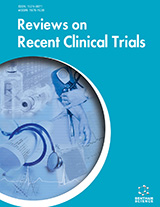Abstract
Bisphosphonates (BPs) are widely used for the treatment of a range of conditions involving bone, such as osteoporosis and bone metastases of cancer, and their efficacy has been confirmed. Nevertheless, a first case of bisphosphonate- related osteonecrosis of the jaw (BRONJ) as an adverse effect of BP treatment was reported in 2003, and several clinical studies since then have elaborated the risk, prevention and treatment of BRONJ or bisphosphonate-related osteomyelitis of the jaw (BROMJ). However, effective decision making on BP risk is hampered by a lack of accurate information for patients, physicians or dentists. Furthermore, the narrow definition of BRONJ used to date has precluded the wider development of clinical research on risk.
In this review, we discuss current issues in BROMJ, with a focus on risk, prevention and treatment. In particular, we reconsider the definition of BRONJ from the standpoint of clinical evidence. Finally, we propose a new strategy for the treatment of BROMJ.
Keywords: Absolute risk, bisphosphonate, osteonecrosis of the jaw, prevention, prognosis, relative risk, risk factors, treatment.
Reviews on Recent Clinical Trials
Title:Recent Clinical Evidence in Bisphosphonate-related Osteomyelitis of the Jaw: Focus on Risk, Prevention and Treatment
Volume: 9 Issue: 1
Author(s): Toru Yamazaki, Katsu Takahashi and Kazuhisa Bessho
Affiliation:
Keywords: Absolute risk, bisphosphonate, osteonecrosis of the jaw, prevention, prognosis, relative risk, risk factors, treatment.
Abstract: Bisphosphonates (BPs) are widely used for the treatment of a range of conditions involving bone, such as osteoporosis and bone metastases of cancer, and their efficacy has been confirmed. Nevertheless, a first case of bisphosphonate- related osteonecrosis of the jaw (BRONJ) as an adverse effect of BP treatment was reported in 2003, and several clinical studies since then have elaborated the risk, prevention and treatment of BRONJ or bisphosphonate-related osteomyelitis of the jaw (BROMJ). However, effective decision making on BP risk is hampered by a lack of accurate information for patients, physicians or dentists. Furthermore, the narrow definition of BRONJ used to date has precluded the wider development of clinical research on risk.
In this review, we discuss current issues in BROMJ, with a focus on risk, prevention and treatment. In particular, we reconsider the definition of BRONJ from the standpoint of clinical evidence. Finally, we propose a new strategy for the treatment of BROMJ.
Export Options
About this article
Cite this article as:
Yamazaki Toru, Takahashi Katsu and Bessho Kazuhisa, Recent Clinical Evidence in Bisphosphonate-related Osteomyelitis of the Jaw: Focus on Risk, Prevention and Treatment, Reviews on Recent Clinical Trials 2014; 9 (1) . https://dx.doi.org/10.2174/1574887109666140423120614
| DOI https://dx.doi.org/10.2174/1574887109666140423120614 |
Print ISSN 1574-8871 |
| Publisher Name Bentham Science Publisher |
Online ISSN 1876-1038 |
 102
102
- Author Guidelines
- Bentham Author Support Services (BASS)
- Graphical Abstracts
- Fabricating and Stating False Information
- Research Misconduct
- Post Publication Discussions and Corrections
- Publishing Ethics and Rectitude
- Increase Visibility of Your Article
- Archiving Policies
- Peer Review Workflow
- Order Your Article Before Print
- Promote Your Article
- Manuscript Transfer Facility
- Editorial Policies
- Allegations from Whistleblowers
Related Articles
-
The Role of Wnt/Beta-Catenin Signaling in Renal Carcinogenesis: Lessons from Cadmium Toxicity Studies
Current Molecular Medicine Lipid Nanoparticles to Deliver miRNA in Cancer
Current Pharmaceutical Biotechnology Bergenin - A Biologically Active Scaffold: Nanotechnological Perspectives
Current Topics in Medicinal Chemistry Rediscovering Tocophersolan: A Renaissance for Nano-Based Drug Delivery and Nanotheranostic Applications
Current Drug Targets Therapeutic Potential of Natural Compounds that Regulate the Activity of Protein Kinase C
Current Medicinal Chemistry The Interplay Between Inflammation and Oxidative Stress in Carcinogenesis
Current Molecular Medicine Cationic Liposomes as Non-viral Vector for RNA Delivery in Cancer Immunotherapy
Recent Patents on Drug Delivery & Formulation Recent Advances in Pegylated Interferon Antiviral Therapy of Chronic Hepatitis C
Anti-Infective Agents in Medicinal Chemistry Amino Acid Degrading Enzymes and their Application in Cancer Therapy
Current Medicinal Chemistry Green Synthesis of Silver Nanocomposites of Nigella sativa Seeds Extract for Hepatocellular Carcinoma
Current Nanomaterials Calcium Sensing Receptor Activators: Calcimimetics
Current Medicinal Chemistry A Review of Diabetes Mellitus and Exposure to the Environmental Toxicant Cadmium with an Emphasis on Likely Mechanisms of Action
Current Diabetes Reviews Targeting the Multifaceted HuR Protein, Benefits and Caveats
Current Drug Targets Targeting Mitochondria in Fighting Cancer
Current Pharmaceutical Design Advances in the Development of Class I Phosphoinositide 3-Kinase (PI3K) Inhibitors
Current Topics in Medicinal Chemistry The Engaged Role of Tumor Microenvironment in Cancer Metabolism: Focusing on Cancer-Associated Fibroblast and Exosome Mediators
Anti-Cancer Agents in Medicinal Chemistry The Transcriptional Regulation of the Human CYP2C Genes
Current Drug Metabolism Proteomic Approaches for the Study of Transgelins as Tumor-associated Proteins and Potential Biomarkers
Current Proteomics Novel Immunotherapies for Hematological Malignancies
Current Molecular Pharmacology Deregulation of HOX B13 Expression in Urinary Bladder Cancer Progression
Current Medicinal Chemistry


























